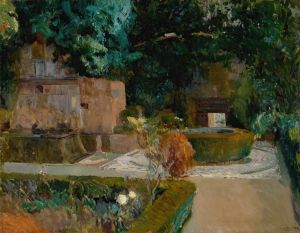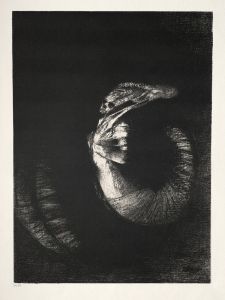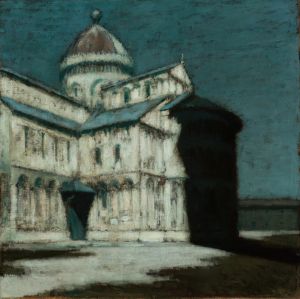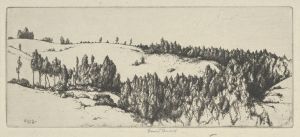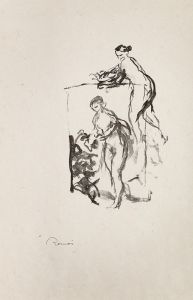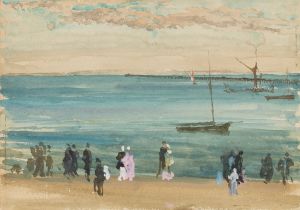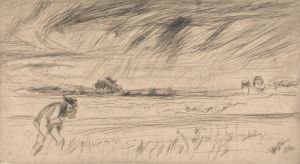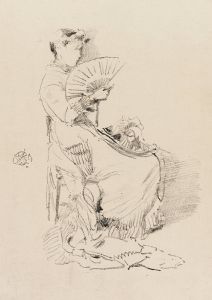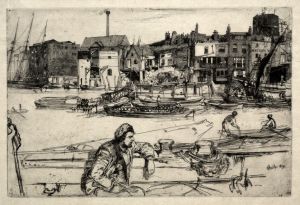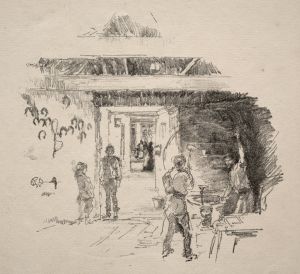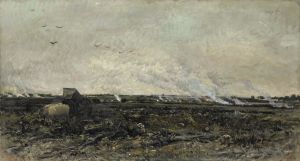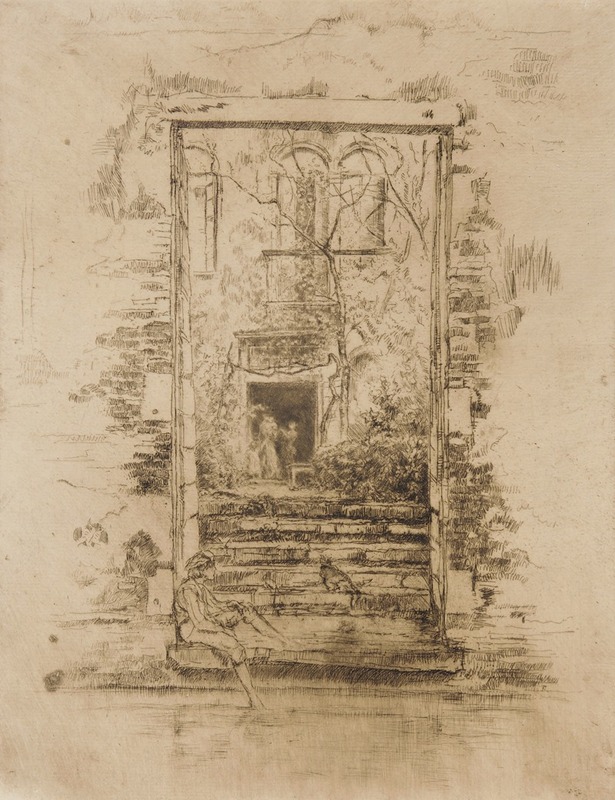
The Garden
A hand-painted replica of James Abbott McNeill Whistler’s masterpiece The Garden, meticulously crafted by professional artists to capture the true essence of the original. Each piece is created with museum-quality canvas and rare mineral pigments, carefully painted by experienced artists with delicate brushstrokes and rich, layered colors to perfectly recreate the texture of the original artwork. Unlike machine-printed reproductions, this hand-painted version brings the painting to life, infused with the artist’s emotions and skill in every stroke. Whether for personal collection or home decoration, it instantly elevates the artistic atmosphere of any space.
James Abbott McNeill Whistler was an American artist known for his paintings and etchings, and he played a significant role in the Aesthetic Movement, which emphasized art for art's sake. One of his works, "The Garden," is a lesser-known piece that reflects his interest in capturing the beauty and tranquility of natural settings.
"The Garden" is an oil painting created by Whistler during a period when he was particularly focused on landscapes and the effects of light and atmosphere. Whistler's approach to painting was heavily influenced by his belief in the harmony of color and form, and this is evident in "The Garden." The painting is characterized by its subtle use of color and delicate brushwork, which together create a serene and contemplative mood.
Whistler's technique often involved a limited palette, and in "The Garden," he likely employed soft greens, blues, and earth tones to evoke the lushness and calm of a garden scene. His brushwork in this piece would have been fluid and expressive, capturing the essence of the garden without focusing on minute details. This approach aligns with Whistler's broader artistic philosophy, which prioritized mood and composition over realism.
The exact location or inspiration for "The Garden" is not well-documented, but it is consistent with Whistler's other works from the same period, where he often drew inspiration from his surroundings, whether in London, Paris, or during his travels. Whistler was known to have a keen interest in Japanese art and design, which often influenced his compositions and use of space. This influence might be subtly present in "The Garden," as Whistler often incorporated elements of Japanese aesthetics into his work, such as asymmetry and an emphasis on negative space.
Whistler's work, including "The Garden," was part of a broader movement away from the detailed realism that dominated much of 19th-century art. Instead, he sought to capture the fleeting effects of light and atmosphere, much like the Impressionists, although his style remained distinct. His focus on tonal harmony and the overall mood of a scene can be seen as a precursor to modernist approaches in art.
"The Garden" reflects Whistler's commitment to creating art that transcends mere representation, inviting viewers to experience the emotional and aesthetic qualities of the scene. While not as famous as some of his other works, such as "Arrangement in Grey and Black No. 1" (commonly known as "Whistler's Mother"), "The Garden" exemplifies his dedication to the principles of the Aesthetic Movement.
In summary, "The Garden" by James Abbott McNeill Whistler is a testament to his skill in capturing the essence of a scene through subtle color and composition. It reflects his broader artistic goals of creating harmony and mood, contributing to his legacy as a pivotal figure in the transition from traditional to modern art.





